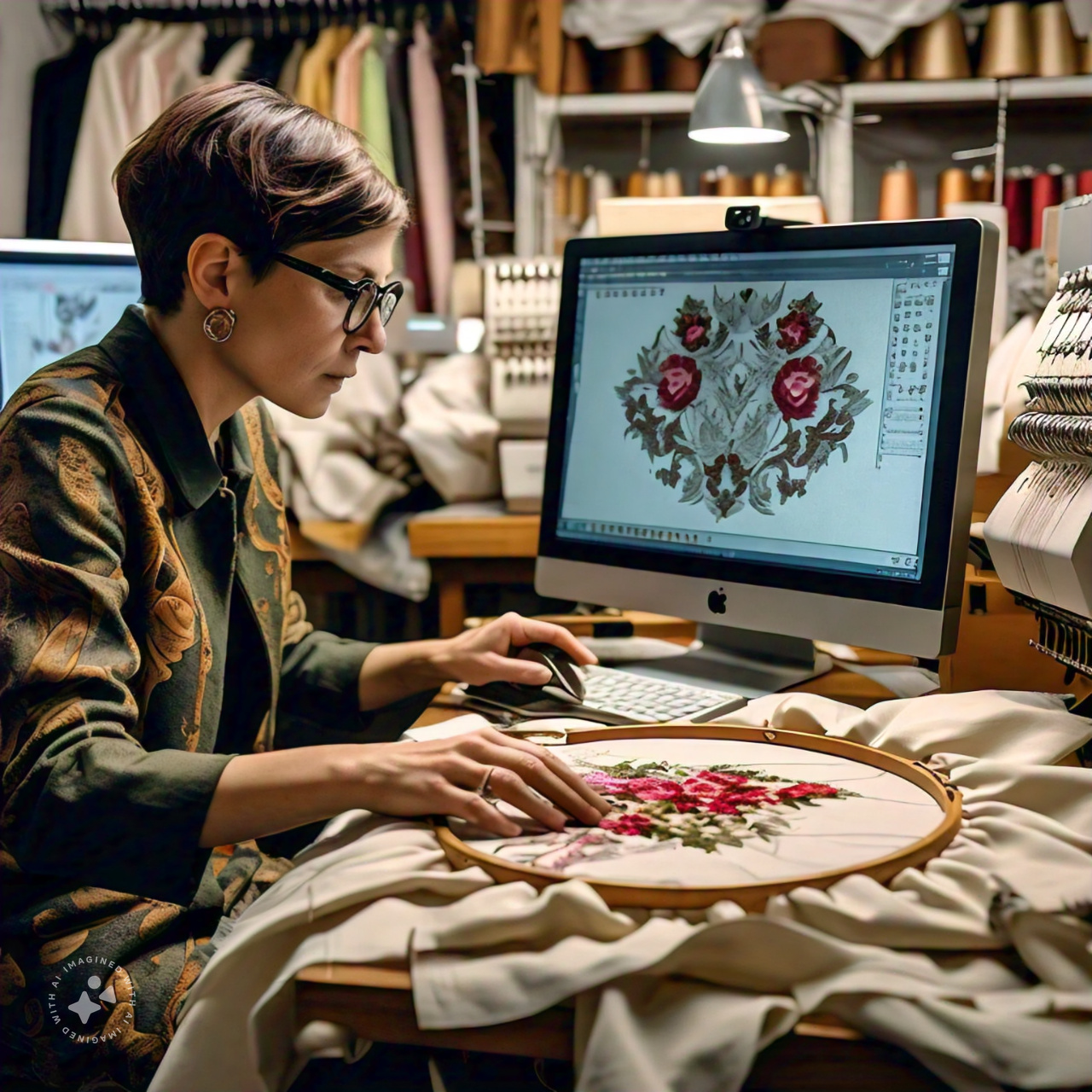Imagine your embroidery machine is like a foreign exchange student – brilliant at what it does, but only understands one very specific language. That’s where PES files come in. They’re not just files; they’re expert translators converting your visual ideas into terms your Brother embroidery machine can comprehend. This translation process turns “nice picture” into “perfect stitches” through a fascinating alchemy of art and technology.
Most beginners don’t realize that image to PES file conversion isn’t a simple file conversion like changing a Word doc to PDF. It’s more like translating poetry – you’re not just changing words, you’re recreating meaning in a completely different medium. That company logo with delicate gradients? The watercolor-style artwork you love? Your child’s handwritten name? Each requires special handling to make the leap from pixels to stitches successfully.
The Language Barrier Between Images and Embroidery
Digital images and embroidery speak entirely different languages. Your JPEG or PNG is made of pixels – tiny squares of color that blend seamlessly together. Embroidery works with physical threads that can’t blend or overlap like pixels can. The PES file bridges this gap by providing:
- Stitch-by-stitch GPS coordinates for your machine
- Exact thread color sequencing
- Special codes for jumps, trims and color changes
- Density instructions for different design elements
Professional digitizers are essentially bilingual – fluent in both visual design and machine embroidery languages. They don’t just convert your image; they reinterpret it for an entirely different medium.
The Translation Process Step-by-Step
1. Analyzing the Original Artwork
A skilled digitizer examines your image like a detective:
- Identifies which elements will translate well to thread
- Spots potential trouble areas (tiny details, gradients, etc.)
- Determines the best approach for each design section
2. Choosing the Right “Words” (Stitch Types)
Just like choosing words carefully when translating, digitizers select stitch types deliberately:
- Satin stitches for smooth borders and text
- Fill stitches for solid areas (with various patterns available)
- Running stitches for fine details
- Underlay stitches as hidden foundations
3. Creating the “Grammar” (Stitch Sequence)
The order stitches are placed matters tremendously:
- Layering from background to foreground
- Grouping colors to minimize thread changes
- Planning efficient paths to reduce jump stitches
4. Adding “Accent Marks” (Special Adjustments)
Final tweaks account for real-world physics:
- Pull compensation for fabric stretch
- Density adjustments for different materials
- Tie-off points to secure threads
Why Google Translate Doesn’t Work Here
Auto-digitizing software is the machine embroidery equivalent of Google Translate – it can handle simple phrases but often mangles complex ideas. That’s because:
- It doesn’t understand fabric behavior
- Can’t make artistic judgment calls
- Misses subtle details in complex designs
- Lacks human intuition about stitch flow
Professional digitizers are like literary translators – they capture not just the words but the spirit and nuance of your original design.
When Machine Translation Fails
Certain design elements consistently trip up auto-digitizing:
Gradients and Shadows
Require creative color blocking and stitch direction changes to simulate depth
Small Text
Needs specialized stitch techniques to remain legible at tiny sizes
Photographic Details
Demand advanced stitch patterning to suggest texture
Mixed Media Elements
Need careful layering and density balancing
This is where human expertise makes all the difference in getting quality results.
Dialects of the Embroidery World
Just like human languages have dialects, different machines use slightly different file formats:
- PES – Brother machines
- DST – Tajima and industrial machines
- EXP – Melco/Bernina
- JEF – Janome
A good digitizing service will provide your design in multiple formats so it works with any machine.
The Proofreading Stage (Testing)
No quality translation goes unpublished without editing, and no PES file should hit production without:
Virtual Proofing
- Software simulation of the stitch path
- Color sequence verification
Physical Sampling
- Actual test stitch on similar fabric
- Adjustment of any problem areas
Client Approval
- Review of stitched sample
- Final tweaks if needed
This iterative process ensures the translation is perfect before full production begins.
Lost in Translation: Common Conversion Problems
Even with careful work, some concepts don’t translate perfectly:
Puckering Fabric
Solution: Add more underlay or reduce density
Thread Breaks
Solution: Adjust tension or stitch length
Blurry Details
Solution: Simplify complex areas
Color Mismatches
Solution: Test stitch with actual threads
Professional digitizers anticipate these issues and build in safeguards.
The Future of Embroidery Translation
Exciting developments are improving the process:
- AI-assisted tools that suggest stitch patterns
- Better simulation software predicting fabric behavior
- Cloud collaboration for remote adjustments
- Advanced thread technologies allowing more color effects
Yet human creativity remains essential for truly exceptional translations of complex designs.
Becoming Fluent Yourself
Want to learn this specialized language? Start by:
- Studying professional PES files stitch by stitch
- Practicing with simple designs first
- Testing extensively on different fabrics
- Learning one software deeply rather than many superficially
- Being patient – true fluency takes time
Remember, even professional digitizers were once beginners staring confused at their first stitch files.
When to Call an Interpreter
Consider professional digitizing when:
- Your design has complex shading or details
- The items are for commercial sale
- You’re working with difficult fabrics
- Results from auto-digitizing disappoint
Sometimes it’s worth hiring a professional translator rather than struggling with phrasebooks.
The Takeaway
Converting images to PES files is far more than simple file conversion – it’s a specialized form of translation between visual and textile languages. While software can handle basic phrases, complex designs need human interpreters who understand both the art and the craft of embroidery.
Whether you choose to learn this language yourself or work with professional translators, understanding the process helps you get the best possible results from your embroidery machine. After all, clear communication is just as important between you and your machine as it is between people.
Now that you understand how this translation works, you’re better equipped to create or evaluate PES files that will make your embroidery sing. Happy stitching!


